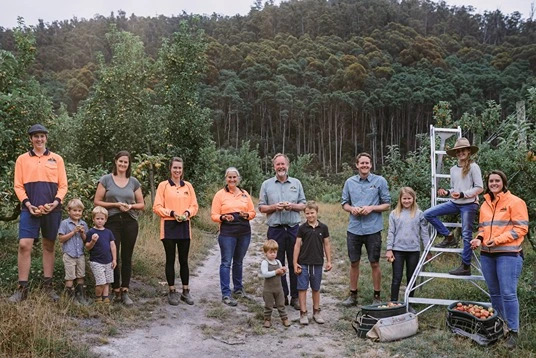Fruit production, and particularly the export of cherries, is a significant industry for the country.
The national cherry orchard area is the largest among fruit trees, and the plantations show steady growth despite the current economic conditions.
Given its importance, it is necessary to maintain productivity standards and plant health that allow access to markets in optimal conditions.
Among the Diseases
Among the economically important diseases, bacterial canker is the most frequent and severe affecting the species in Chile.
Bacterial canker is caused by Pseudomonas syringae pv. syringae, a pathogen with worldwide distribution that affects over 180 plant species, including stone fruits and pome fruits.
The bacterium spreads through waterways, soil, plants, and rain or hail droplets.
It is a pathogen equipped with polar flagella, allowing it to move independently through water films toward sources of nutrients.
Moreover, it can survive
Moreover, it can survive on plants without causing damage, feeding on nutrient secretions exuded from the epidermis and young stems.
The main bacterial reservoirs are diseased tissues, cankers, spurs, and branches affected by the disease, buds, the interior of infected trees, and the surface of the plant.
From these locations, the bacterium moves, assisted by its flagella and the presence of free water, toward natural or artificial openings of the plant, initiating the pathogenic process.
Control
Bacterial control is difficult.
The range of favorable conditions is broad, controls are incomplete, and bacteria can form colonies that ensure the survival of some individuals.
Furthermore, once the pathogen enters the plant, surface treatments are ineffective.
The main periods when the disease can enter the plant are during leaf fall and budding, due to the large number of wounds generated during these long periods.
Consequently
Consequently, treatments that promote rapid leaf fall are important, allowing more efficient control.
Chemical Control
During leaf fall and budding, copper-based products are commonly used.
The effectiveness of these products depends on the rate at which they release Cu⁺² ions and the size of the particles containing them; the smaller the particle, the greater the release.
The pH also plays a key role: the more acidic the mixture, the greater the release, so frequent water analyses, pH measurements in the field, and necessary corrections are recommended.

However, a rapid release is not always desirable.
During leaf fall, for instance, it is useful to leave a deposit of copper on the plant so that it is progressively released during the process.
In Case of Frosts
In case of frosts, however, it is necessary to act quickly to protect the wounds formed.
Moreover, to ensure effectiveness, it is important to consider the concentration of metallic copper (the actually active component) and not just the concentration of the molecule containing it.
This information often causes confusion when selecting the most appropriate product for bacterial canker control at each phenological stage of the crops.
Another important aspect is the incorrect belief that copper does not generate resistance or that it must be applied after every rain event exceeding 10 or 20 mm (10 mm = 1 cm / 20 mm = 2 cm).
In reality, the bacterium does not need rain to start its cycle, only free water, which can come from dew, fog, or rain.
Such practices promote the excessive application of copper products, leading to resistance and contamination of soils and water.
Antibiotics
The use of antibiotics is a common practice for bacterial control; however, it should be noted that they act systemically and require the presence of leaves to move and translocate within the plant.
Additionally, these products can rapidly generate resistance.
Biological Control
Regarding biological control, numerous studies have shown the bactericidal effects of the Bacillus sp. genus against Pseudomonas.
Research also highlights Bacillus effects as plant growth promoters, improving defenses, increasing yields, and producing antibiotics and lipopeptides.
Summary
Bacterial canker is the most widespread disease in cherry cultivation in Chile.
Control measures must consider aspects such as the pathogen’s life cycle and dissemination systems to implement more integrated control strategies.
The main control strategies are based on copper-based products which, together with antibiotics, should be evaluated case by case to maximize benefits and avoid resistance.
Biological control has proven to be as effective as chemical control, additionally providing plants with growth-promoting effects, yield increases, and natural defense enhancements through the synthesis of natural antibiotics.
Rodrigo Belmar
Agro 360
Cherry Times - All rights reserved













